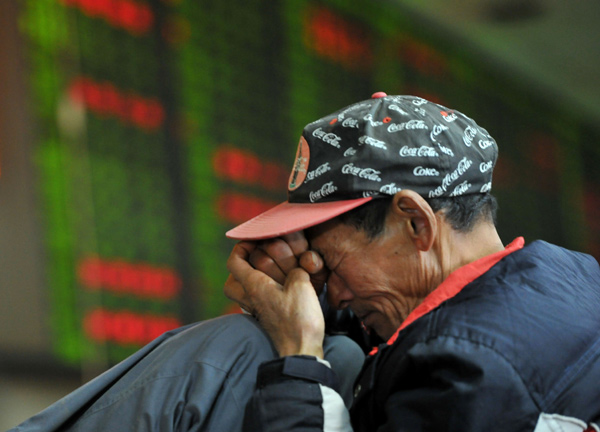

|
 |
|
A man at a brokerage in Nanjing, Jiangsu province. Chinese shares closed lower on Nov 8, 2013 with the benchmark Shanghai Composite Index down 1.09 percent, or 23.27 points, to finish at 2,106.13.[Liu Yifan/for China Daily] |
Gains in Asian bourses this year so far are modest, with Singapore stock market benchmark up merely 1.1 percent, Malaysia's up about 7 percent, and Indonesia's and South Korea's up 2 percent each. All bourses are still well below mid-year peak. Philippine bourse, for instance, is about 12 percent below its peak in May.
"We are not convinced that Asian markets will rise much further into the yearend," CIMB Research said, citing "the magnitude of recent price gains and proximity to yearend" as factors that might limit the upside for Asian equities.
"We think that the risks through the year-end are skewed towards disappointments rather than positive surprises," wrote the research house. It argued that the boost to Asian markets from Federal Reserve's tapering delay, the determination among policy makers in the region such as those in India and Indonesia to expedite fiscal reforms, together with recent positive growth and export momentum seen in some countries liked China and Singapore, have already largely played out in the stock prices at current level.
Indeed, the slew of positive factors does not mean the threats to performance of Asian stocks have disappeared. CIMB said the region remains vulnerable to external shocks such as higher interest rates, a stronger US dollar and weaker local currencies should the US central bank scale back its monetary stimulus.
Don't miss
China's CSI300 index ends at 2-month low
Profits plummet in Oct for China's brokerage firms
Sinopec parent plans $17.7b stake buyback
New Deutsche ETF taps China's A shares
CSRC head urges improved delisting system
Special Coverage
 Hot models at SEMA Show
Hot models at SEMA Show
 Modified Scion FR-S (Toyota 86) at SEMA Show
Modified Scion FR-S (Toyota 86) at SEMA Show
 Scion FR-S (Toyota 86) modified by Airaid at SEMA Show
Scion FR-S (Toyota 86) modified by Airaid at SEMA Show
 Models at Spyder pavilion at SEMA Show
Models at Spyder pavilion at SEMA Show
 Models at Anso pavalion at SEMA Show
Models at Anso pavalion at SEMA Show
 Modified Ford Fiesta by 3D Carbon at SEMA Show
Modified Ford Fiesta by 3D Carbon at SEMA Show
 Modified Ford Fiesta ST by MRT at SEMA Show
Modified Ford Fiesta ST by MRT at SEMA Show
 Modified Ford Fiesta ST by COBB at SEMA Show
Modified Ford Fiesta ST by COBB at SEMA Show